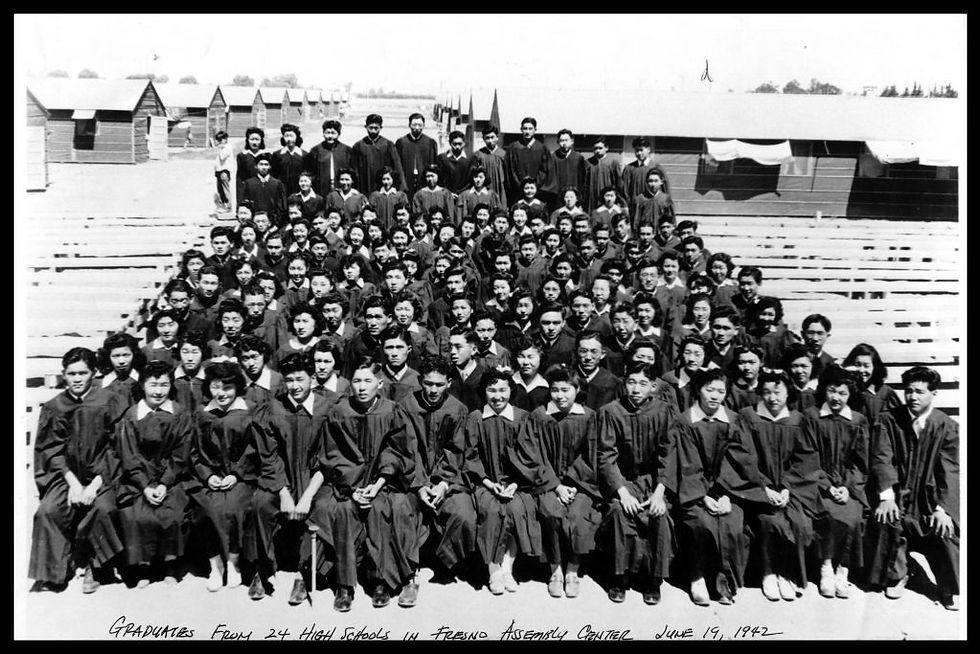Day of Remembrance: The Story of Japanese-American Internment Camps During WWII
- Feb 1, 2021
- 2 min read
Nearly 80 years ago on February 19, 1942, President Franklin D. Roosevelt signed Executive Order 9066 that instructed all Japanese-Americans to be put into internment camps. The First Day of Remembrance was held on November 25, 1978, in Seattle, Washington, but after the second DOR was held in Portland, the date was moved to February 19 to observe the anniversary date of the signing of Executive Order 9066.
In response to the bombing of Pearl Harbor by the Japanese in 1941 during World War II, FDR faced enormous pressure by military and political advisors to address the nation's fears of possibly another attack from the Japanese--particularly on the West Coast due to high demand of naval ports and commercial shipping in that area. Alongside the West Coast, approximately over 100,000 men, women, and children of Japanese descent were evicted from their homes and held in American Concentration camps all throughout the country.
A handful of these detention facilities were placed in California such as: Fresno, Merced, Pomona, Puyallup, Salinas, Stockton, Tulare, and Turlock. These detention facilities were held on fairground sites, the more widely known detention facility was located at the Fresno County Fairgrounds. The Fresno Assembly Center was populated from May 6 to October 30, a total of 177 days. According to a photo essay posted by Densho Blog, on October 1942, the camp was closed and nearly all of the inmates held there were sent to the camp in Jerome, Arkansas and the rest were sent to Gila River, Arizona. The Fresno Assembly Center was the last of these detention facilities to close. About 60 miles north was the Merced Assembly Center that was located on the Merced County Fairgrounds. Approximately 200 tar paper barracks, each 20 by 100 feet, were divided into units for five families. There were eleven mass halls, five laundries, forty shower areas, and thirty toilet areas. The Merced detention facility was fenced in with barbed wire 4 1/2 feet high with 160 soldiers guarding the area. Of the 4,669 prisoners held at this facility, about 1,000 of them were school-aged children and there were temporary schools set up for them. Five months after they opened on September 15, 1942, the Merced Assembly Center was closed.
Decades after World War II on February 19, 1976, President Gerald Ford signed an order that prohibited the executive branch from reinstating Executive Order 9066. According to NPR, in 1988, President Ronald Reagan issued a public apology on behalf of the US government and signed the Civil Liberties Act which compensated more than 100,000 people of Japanese descent who were held prisoner in internment camps during World War II. Each surviving victim was given $20,000. The Day of Remembrance is a special day for the Japanese-American community and all of America to look back on the tragic history their ancestors endured and to keep their stories alive.


Comments